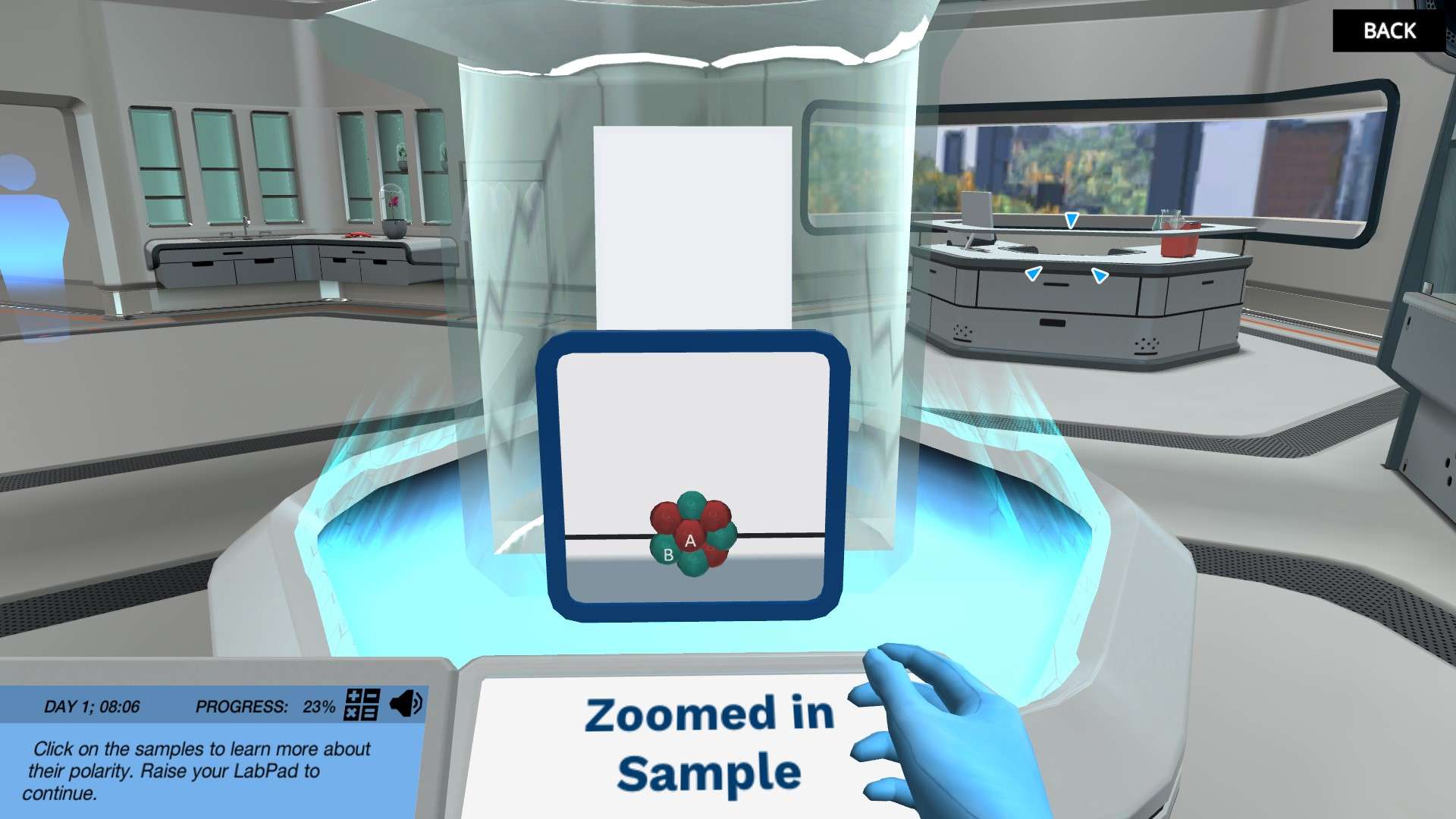Heading 1
Heading 2
Heading 3
Heading 4
Heading 5
Heading 6
Lorem ipsum dolor sit amet, consectetur adipiscing elit, sed do eiusmod tempor incididunt ut labore et dolore magna aliqua. Ut enim ad minim veniam, quis nostrud exercitation ullamco laboris nisi ut aliquip ex ea commodo consequat. Duis aute irure dolor in reprehenderit in voluptate velit esse cillum dolore eu fugiat nulla pariatur.
Block quote
Ordered list
- Item 1
- Item 2
- Item 3
Unordered list
- Item A
- Item B
- Item C
Bold text
Emphasis
Superscript
Subscript
About This Simulation
Discover the intermolecular interactions involved in Thin Layer Chromatography. Utilize this newfound knowledge to assemble, run, and analyze a TLC experiment to monitor the progress of a reaction.
Learning Objectives
- Assemble, run, and analyze your own TLC experiment
- Understand the key principles of Thin Layer Chromatography and how the mobile and stationary phases interact with a sample to enable separation
- Monitor the progress of a reaction via TLC
- Quantify and interpret the spots on a complete TLC plate
- Measure migration distances and use them to determine the Rf values of different compounds of interest
About This Simulation
Lab Techniques
- Thin Layer Chromatography (TLC)
Related Standards
Learn More About This Simulation
Explore the interactions involved in Thin Layer Chromatography
Dr. One has been experimenting. In the Lab you can observe the separation of pigments in a spinach leaf, but how did they achieve this? Welcome to the world of Thin Layer Chromatography! Using a solvent, a stationary phase, a sample, and some time, you will be able to separate the components of a mixture. Learn about the interactions by taking a visit to the world's largest TLC plate (awaiting official certification), and zoom into the stationary phase to observe how TLC separates a sample.
Determine the mobile phase through trial and error
After you have explored the interactions, it is time to determine the mobile phase solvent ratio for your own TLC plate. Trial combinations of different solvents to separate compounds with different polarities, until you have found the perfect mobile phase to separate the molecules of interest. The joys of a virtual lab means you get instant feedback, and don’t have to wait for several TLC plates to develop.
Monitor the progress of a reaction via TLC and analyze the results
Once you have calculated the correct solvent ratio, it’s time to get to work. Assemble and run your own TLC experiment to monitor the progress of a reaction. Select the appropriate apparatus, experiment with how to handle and place the plate, and correctly spot the sample onto the stationary phase. Will you be able to successfully remove the plate from the chamber at the right time? After you have run the experiment, move onto analyzing your TLC plate under UV light, determining when the reaction has gone to completion. The virtual lab saves time again, with rapid results! Then you will cap it all off by measuring the distance the spots have moved to calculate the Rf value. Will you be able to successfully analyze your results and figure out at what time the reaction completed?
For Science Programs Providing a Learning Advantage
Boost STEM Pass Rates
Boost Learning with Fun
75% of students show high engagement and improved grades with Labster
Discover Simulations That Match Your Syllabus
Easily bolster your learning objectives with relevant, interactive content
Place Students in the Shoes of Real Scientists
Practice a lab procedure or visualize theory through narrative-driven scenarios


FAQs
Find answers to frequently asked questions.
Heading 1
Heading 2
Heading 3
Heading 4
Heading 5
Heading 6
Lorem ipsum dolor sit amet, consectetur adipiscing elit, sed do eiusmod tempor incididunt ut labore et dolore magna aliqua. Ut enim ad minim veniam, quis nostrud exercitation ullamco laboris nisi ut aliquip ex ea commodo consequat. Duis aute irure dolor in reprehenderit in voluptate velit esse cillum dolore eu fugiat nulla pariatur.
Block quote
Ordered list
- Item 1
- Item 2
- Item 3
Unordered list
- Item A
- Item B
- Item C
Bold text
Emphasis
Superscript
Subscript
A Labster virtual lab is an interactive, multimedia assignment that students access right from their computers. Many Labster virtual labs prepare students for success in college by introducing foundational knowledge using multimedia visualizations that make it easier to understand complex concepts. Other Labster virtual labs prepare learners for careers in STEM labs by giving them realistic practice on lab techniques and procedures.
Labster’s virtual lab simulations are created by scientists and designed to maximize engagement and interactivity. Unlike watching a video or reading a textbook, Labster virtual labs are interactive. To make progress, students must think critically and solve a real-world problem. We believe that learning by doing makes STEM stick.
Yes, Labster is compatible with all major LMS (Learning Management Systems) including Blackboard, Canvas, D2L, Moodle, and many others. Students can access Labster like any other assignment. If your institution does not choose an LMS integration, students will log into Labster’s Course Manager once they have an account created. Your institution will decide which is the best access method.
Labster is available for purchase by instructors, faculty, and administrators at education institutions. Purchasing our starter package, Labster Explorer, can be done using a credit card if you are located in the USA, Canada, or Mexico. If you are outside of North America or are choosing a higher plan, please speak with a Labster sales representative. Compare plans.
Labster supports a wide range of STEM courses at the high school, college, and university level across fields in biology, chemistry, physics, and health sciences. You can identify topics for your courses by searching our Content Catalog.















